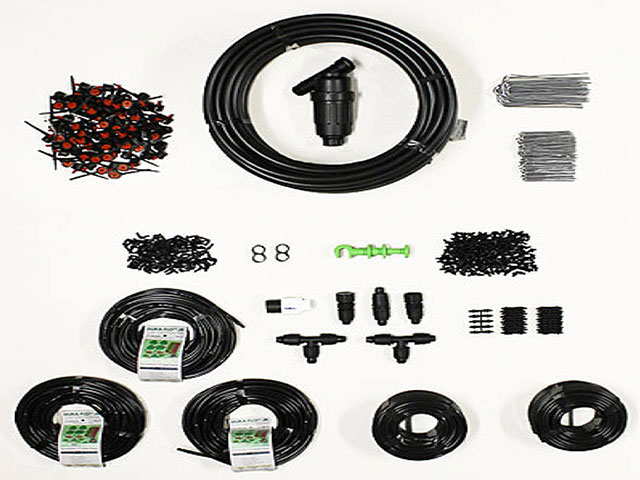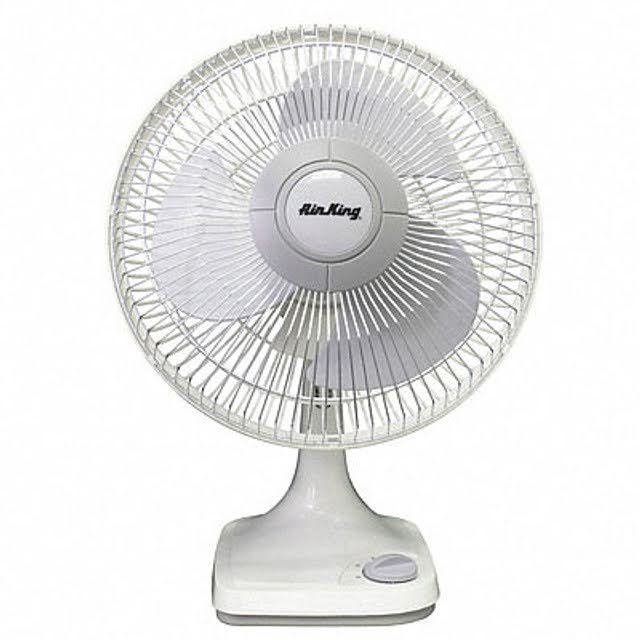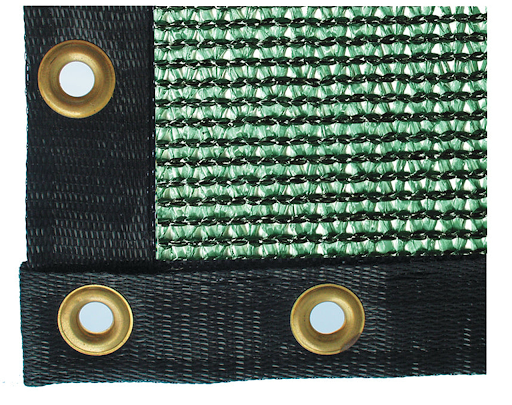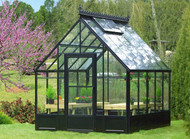The 12 Best Spring Plants to Grow in a Greenhouse
Having a greenhouse showcases your gardening skills, but choosing what to grow in your little sanctuary can be tricky. Even though a greenhouse puts you in charge by shielding your plants from harsh weather and letting you tweak the humidity, there are a few more things to think about to help you pick the right plants.
Wondering what plants grow in spring in a greenhouse? When unsure, opt for salad veggies. They’re easy to grow, yield plenty, and love the warmer months. Tomatoes, peppers, and eggplants are greenhouse favorites.
No salad is complete without greens, and fortunately, they’re simple to cultivate. Opt for cut-and-come-again lettuces for a continuous supply throughout the season. If space is a concern, herbs are a fantastic option since they grow well in shallow containers.
But the salad starter pack isn’t the only thing even rookie gardeners can grow successfully. Explore the variety of plants to grow in a greenhouse this upcoming spring, from strawberries and herbs to fragrant flowers.
Tomatoes
Tomatoes are a staple in any spring garden, and their need for warmth and consistent temperatures makes them perfect for a spring gardener greenhouse. With a greenhouse’s controlled environment, you can start your tomato plants early and extend their growing season well into the fall.
Some of the best varieties to get started in a hot house include Big Beef, which has a fleshy consistency with few seeds and produces an abundant yield. It is also disease-resistant. San Marzano are favored for their intense, concentrated flavor and reduced water content, while stalwarts, such as Early Girl, are perfect for sowing early in the spring season so you can benefit from their fast maturation and enjoy your harvest sooner.
For a successful greenhouse tomato crop, plant seeds indoors 6-8 weeks before the last frost date, transplanting them into larger containers once they have developed true leaves. You’ll need to ensure proper air circulation to prevent fungal diseases like blight and provide support structures like sturdy cages or trellises for indeterminate varieties to grow upright.

Maintain consistent soil moisture through drip irrigation or mulching and fertilize every 2-3 weeks with a balanced fertilizer rich in potassium and phosphorus to promote fast growth and fruit production. Also, ensure that you prune and remove suckers (side shoots) to direct the plant’s energy toward fruit production.
Peppers
Peppers thrive in warm conditions, so a greenhouse’s hotter ambient temperatures make them an excellent option for jump-starting your pepper harvest in spring. Suitable greenhouse pepper varieties include California Wonder (bell), Jalapeno (hot), Cubanelle (sweet), and Habanero (extremely hot). A greenhouse provides the optimal temperature and moisture conditions for California Wonder and Cubanelle to achieve uniform ripeness, Jalapeno to develop consistent heat, and Habanero to reach extreme heat levels, ensuring high-quality, flavorful peppers.
When sowing pepper seeds, provide ample spacing between plants, at least 18”-24”, to allow for proper air circulation and prevent the spread of diseases. Maintain consistent soil moisture with mulching and nourish regularly with a fertilizer rich in calcium and magnesium to support healthy growth and fruit production.

You can promote good air circulation by using oscillating fans or venting the greenhouse to avoid fungal diseases like Phytophthora blight. Also, watch common pepper pests like aphids, thrips, and spider mites, which can thrive in greenhouse conditions.

Use biological control methods, such as introducing predatory mites or beneficial nematodes, insecticidal soaps, or neem oil, to manage pest populations. Also, avoid overhead watering, as wet foliage can promote fungal diseases.
Cucumbers
Cultivating cucumbers in a spring run greenhouse can jump-start their growth, providing an early and abundant harvest. The warmth and protection a greenhouse offers are ideal for cucumbers, which prefer consistent warm temperatures between 70-75°F during the day.
Opt for varieties like the seedless Socrates, Tyria, and Diva, which thrive without pollination, or Dasher II and Eureka, known for their predominantly female flowers and abundant yields. However, if you have limited space, Picolino or Mini Munch produce small, snack-sized fruits.
For successful cucumber cultivation, balance humidity and ventilation to deter moisture-related diseases like powdery and downy mildew. Install a drip irrigation system for consistent soil moisture and feed your cucumbers a nitrogen and potassium-rich fertilizer to support their rapid vine growth.
Install trellises to promote vertical growth. This allows for better air circulation and easier harvesting and minimizes the risk of diseases. Monitor your plants regularly for pests like cucumber beetles, aphids, and spider mites. You may need to use control methods like introducing predatory mites or beneficial nematodes to keep them healthy and productive.
Lettuce
Crops like lettuce need the protection from frost and harsh conditions that a greenhouse provides. A greenhouse also allows for precise control over nutrients and watering, resulting in healthier plants, extended harvest periods, and superior leaf quality and flavor. If you are planning on cultivating hot house greens, some of the best varieties include Black Seeded Simpson (loose-leaf), Buttercrunch (bibb), and Rouge d'Hiver (romaine).
Sow lettuce seeds straight into the greenhouse soil or a substrate, or start them indoors and transplant the seedlings once the greenhouse’s ambient temperature is warm enough. Lettuce seeds typically germinate best at temperatures between 35°F and 80°F, with the optimal range for germination around 60°F to 68°F. When transplanting seedlings into the greenhouse, ensure the ambient temperature is consistently within this range, especially at night, to avoid cold stress.
Ensure proper air circulation and maintain consistent soil moisture to prevent issues like bolting (premature flowering) and tip burn.

Consider planting lettuce in succession every 2-3 weeks for a continuous harvest. Use shade cloths or strategically position the lettuce beds to provide partial shade during the hottest parts of the day, as lettuce can bolt prematurely in excessive heat.
Eggplants
Like tomatoes and peppers, eggplants benefit from the consistent temperatures and protection from outdoor elements that a greenhouse provides. Black Beauty, Rosa Bianca (Italian heirloom), and Calliope are some of the popular choices. They offer glossy fruits, excellent flavor, and relatively few seeds, making them ideal for a wider range of dishes, from stuffing to frying.
Plant the seeds indoors in early spring, transplanting them into larger containers or directly into the greenhouse once the danger of frost has passed. Maintain temperatures between 70-85°F with sufficient sunlight, consistent watering, and support for heavy fruiting branches to ensure a successful harvest of tender, delicious eggplants.
Eggplants are heavy feeders and benefit from regular supplementation with a balanced fertilizer throughout the growing season. Always check the underside of the leaves and flower buds for pests like aphids and flea beetles, and take prompt action to prevent infestations from damaging your plants.
Strawberries
Starting strawberries in a greenhouse can yield an early and prolonged harvesting period, with varieties like San Andreas, Sweet Charlie, Albion, and Eversweet offering sweet, juicy berries throughout the spring and summer months.
Plant strawberry crowns or runners in containers filled with well-draining potting mix, ensuring they receive proper sunlight and consistent moisture. Mulch around the base of the plants to inhibit weed growth and retain soil moisture, and harvest ripe berries regularly for a steady supply of fresh fruit.
Remove runners (daughter plants) as they appear and fertilize them regularly with a balanced fertilizer or compost tea. Support trailing varieties to keep the fruit off the ground, prevent rotting, and thin out runners to promote better growth and fruiting. Strawberries are perennial plants and will continue to produce fruit for several years with proper care.
Herbs
Extend your growing season and enjoy fresh herbs like basil, cilantro, and chives year-round within your greenhouse! Varieties like Genovese basil, Slow Bolt cilantro, and Common chives are particularly suitable for greenhouse cultivation due to their easy growth and low maintenance needs.
Start herb seeds indoors in trays or containers filled with potting mix, keeping the soil consistently moist until germination occurs. Provide adequate sunlight, warmth, and ventilation to help them grow, and harvest leaves as needed for fresh seasoning in your favorite dishes.
Herbs are versatile and thrive well in greenhouses, whether planted in containers or moist soil. This means you can enjoy fresh flavors and enticing aromas year-round, regardless of space limitations.
Beans
Greenhouse conditions can help beans get a head start in spring. Provider Blue Lake (bush), Kentucky Wonder (pole), and Dragon Tongue (specialty) are popular varieties, offering tender pods and excellent flavor.
Plant bean seeds indoors in trays or containers filled with well-draining potting mix, transplanting them into larger containers or directly into the greenhouse once the danger of frost has passed. Provide support structures like trellises or cages for pole and climbing varieties with consistent moisture via a drip irrigation system, and regularly harvest the legumes to ensure a continuous supply of delicious beans throughout the season.
Install row covers or introduce beneficial insects like ladybugs or lacewings to manage pest populations naturally and avoid overhead watering to limit fungal diseases. Beans are nitrogen-fixing plants and benefit from companion planting with nitrogen-loving crops like peas or lettuce. Rotate bean crops with other vegetables to prevent soil depletion and maintain healthy, productive plants year after year.
Peas
Cool-weather crops like peas can also thrive in the protected environment of a spring greenhouse, allowing them an earlier and extended harvest while avoiding late spring frosts.
Some suitable pea varieties for greenhouse cultivation include Sugar Snap, Wando (garden pea), and Golden Sweet (snow pea). These varieties offer sweet, tender pods for fresh snacking or cooking. Sow seeds immediately in the greenhouse or start them indoors and transplant the seedlings once the greenhouse is warm enough.

Provide support structures like trellises or cages for the pea vines to climb. Maintain consistent soil moisture and ensure good air circulation to prevent issues like powdery mildew. Peas prefer cooler temperatures, around 55-70°F, so ventilate the greenhouse as needed (depending on your climate and weather) to avoid heat buildup and maintain optimal conditions.
Radishes
Radishes are a low-maintenance crop that provides a satisfyingly fast harvest, making them an excellent option for early spring greenhouse planting. Varieties like Cherry Belle, French Breakfast, Watermelon (with their distinct red flesh and white interiors), and Easter Egg are popular options, offering crisp, peppery roots for salads and snacks.
Plant radish seeds in seed-starter pods filled with potting mix, misting the soil consistently moist until germination occurs. You’ll need to thin seedlings to prevent crowding and harvest radishes when they reach the desired size for the freshest flavor and to prevent them from becoming woody.
Radishes are fast-growing, low-maintenance plants and require minimal care once established. Keep the soil evenly moist and provide plenty of sunlight to promote rapid growth and flavorful roots. For a continuous harvest, plant radish seeds every 2-3 weeks.
Begonias
Begonias are a popular ornamental flower prized for their colorful blooms and lush foliage. These plants are tender perennials and prefer temperatures between 65-75°F, making them ideal for greenhouse cultivation year-round. There are numerous options like Dragon Wing (wax begonia), Richmondensis (hiemalis begonia), and Bossa Nova (tuberous begonia), which offer vibrant flowers in a range of hues.
Try planting begonia tubers indoors in containers filled with potting mix, or make your own using a blend of four parts leaf mold, one part coarse sand, and one part garden loam. You also need to keep them warm and moist until shoots emerge.
Once established, ensure your greenhouse has excellent light transmission and set up an irrigation system to provide your begonias with consistent moisture. Throughout the spring, occasionally feed the soil in the containers with a balanced fertilizer to promote healthy growth and abundant blooms.
Geraniums
Geraniums are the perfect ornamental choice for spring greenhouse cultivation. They flourish in a greenhouse’s warm, protected environment and produce an abundance of vibrant blooms and lush foliage. Well-suited geranium varieties for greenhouse growing include Ringo 2000 (zonal), with its striking red flowers, Vancouver Centennial (ivy geranium), featuring delicate hanging blooms, and the unique Pinto Premium regal geranium series with bi-colored flowers.
Start geraniums from seed, cuttings, or dormant tubers indoors 8-10 weeks before the last expected spring frost. Position geraniums in the sunniest area of your greenhouse, as they prefer daytime temperatures around 70-75°F and nighttime temperatures no lower than 60°F.
Avoid overwatering, which can lead to root rot and other moisture-related problems. Feed your greenhouse geraniums every 4-6 weeks during the growing season with a balanced fertilizer to encourage healthy growth and abundant flowering. With proper care and attention, your greenhouse geraniums will reward you with colorful flowers and fragrance throughout the growing season.
Get a Head Start This Spring With the Right Greenhouse
Charley’s Greenhouse & Garden offers an extensive range of high-quality greenhouses and accessories to ensure the plants you grow in your greenhouse thrive during the spring season and beyond. From sturdy, durable structures to advanced climate control systems, our products are designed to provide the optimal environment for various spring plants to grow.
Don’t let unpredictable weather or limited growing space limit your garden. Invest in a greenhouse from Charley’s Greenhouse & Garden and enjoy a bountiful harvest of fresh produce, colorful blooms, and aromatic herbs all season long.

